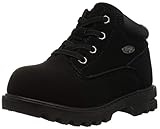All Categories


How to Differentiate Instruction in Academically Diverse Classrooms, Third Edition
Share Tweet








About How To Differentiate Instruction In Academically
We differentiate instruction to honor the reality of the students we teach. They are energetic and outgoing. They are quiet and curious. They are confident and self-doubting. They are interested in a thousand things and deeply immersed in a particular topic. They are academically advanced and “kids in the middle” and struggling due to cognitive, emotional, economic, or sociological challenges. More of them than ever speak a different language at home. They learn at different rates and in different ways. And they all come together in our academically diverse classrooms.Written as a practical guide for teachers, this expanded third edition of Carol Ann Tomlinson’s groundbreaking work covers the fundamentals of differentiation and provides additional guidelines and new strategies for how to go about it. You’ll learn What differentiation is and why it’s essentialHow to set up the flexible and supportive learning environment that promotes successHow to manage a differentiated classroomHow to plan lessons differentiated by readiness, interest, and learning profileHow to differentiate content, process, and productsHow to prepare students, parents, and yourself for the challenge of differentiationFirst published in 1995 as How to Differentiate Instruction in Mixed-Ability Classrooms, this new edition reflects evolving best practices in education, the experiences of practitioners throughout the United States and around the world, and Tomlinson’s continuing thinking about how to help each and every student access challenging, high-quality curriculum; engage in meaning-rich learning experiences; and feel at home in a school environment that “fits.”




 (1)
(1)
















